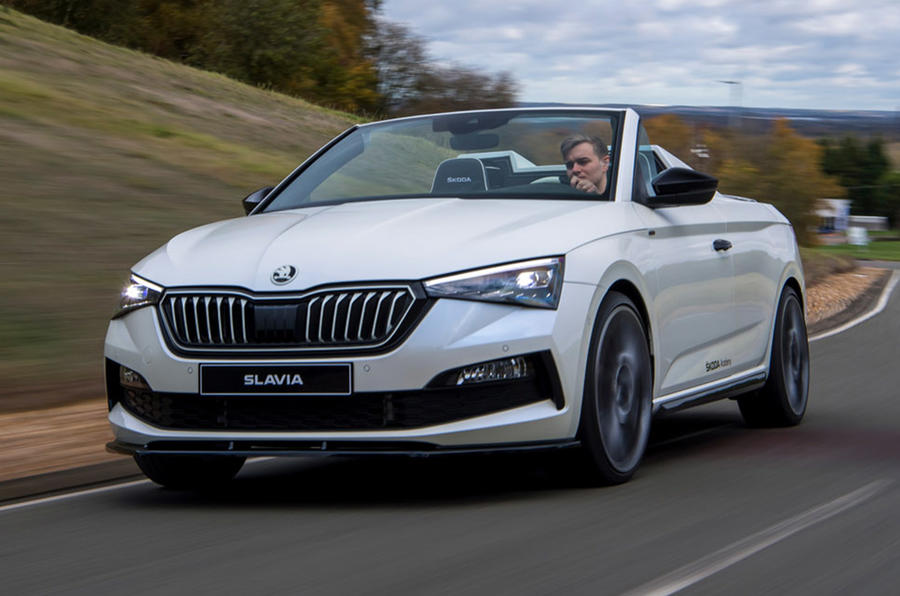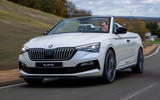The Slavia is the seventh concept car to emerge from Skoda’s in-house apprenticeship programme, Azubi, which in previous years has given us the Mountiaq pick-up, Sunroq convertible and beach buggy-style Element, each based on a contemporary production model.
While previous Azubi concepts have looked to a hypothetical future or taken existing models into radically disparate niches, the new Skoda Scala-based Slavia is inspired both by the 125-year-old story of the firm's birth and by a prototype racer from the middle of the last century.
Skoda claims the annual unveiling of a radical student-built concept is a tradition that dates back the 1970s, referencing a number of historic one-offs of which few details remain.
The Slavia takes its name from the first push bike produced by Skoda founders Václav Laurin and Václav Klement in 1895, before the company moved into automobile production in the early 1900s. That’s largely where the concept’s links to the primitive two-wheeler start and finish, if you discount the fact that the rear storage bay has been specially adapted to house one of Skoda’s new commuter-friendly e-scooters.
Skoda says: “Personal mobility has always been a passion for Skoda, and the brand is actively exploring new ideas as the automotive world transitions to an electrified future.”

Slightly more obvious are the stylistic parallels with the 1957 1100 OHC - a two-seat open-top sports car from the era when Skoda still produced such things. Structural changes for the Scala hatchback base car are centred around the rear half, where the roof and rear seats have been removed to make way for a swooping, twin-hump rear deck.
Such radical re-engineering of the Volkswagen Polo-based Scala wasn't without its challenges, and the 31-strong team of apprentices involved in the Slavia’s construction have taken significant steps to preserve as much of the original car’s rigidity and space as possible.
































Join the debate
Add your comment
It's certainly different and
Did you read the article?
@si73 it is a STUDENT project, it was a LEARNING exercise. What time has been wasted then?
This reminds me of the Seat
This reminds me of the Seat Ibiza Cupster from a few years ago. I'm all for more of these fun cars making it into production. Not everyone can aspire to supercars but we still want to be able to drive something different and exciting.
124spider wrote:
Or a VW.
To the students that designed
Bloody well done!
Any improvements to a Skoda are most welcomed. Keep going.
Improvement?
You think this is an improvement? Oh well, I suppose it's just your opinion.
Just saying!